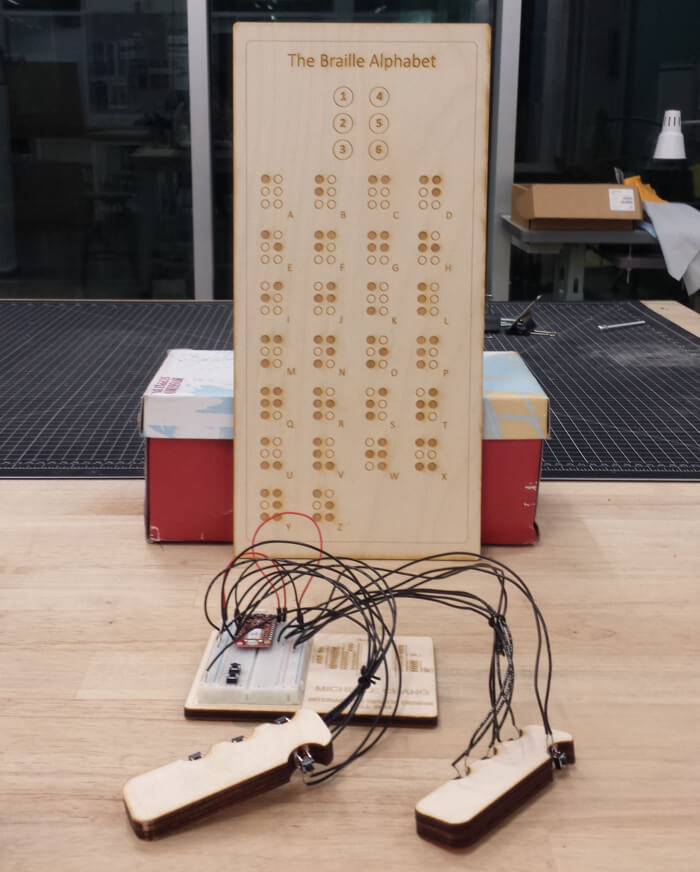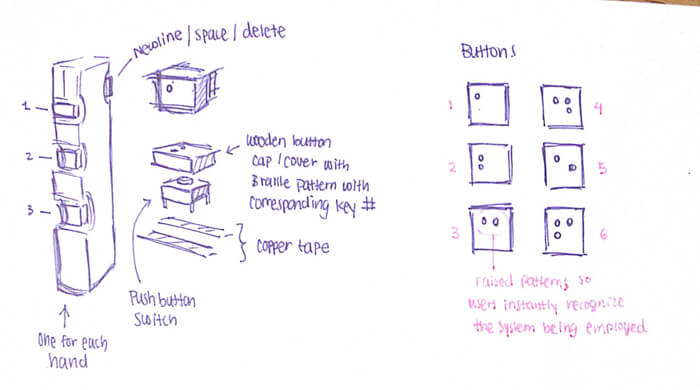Designing a travel-sized text input device for the visually-impaired



Read the full report, detailing the design, preliminary sketches, and fabrication process.
In this project, I sought to gain basic experience with physical prototyping, laser cutting, and Fritzing (a wiring visualization software) by designing and creating a text input device for visually-inpaired users. Specifically, I wanted to enable the visually-inpaired to participate in one of the most common forms of communication today: texting. Most of us have Swipey text input or digitized versions of the classic keyboard on our phones. But these offerings aren't accessible to those of us who cannot rely on sight.
A quick Google search of text input devices and methods revealed the existence of "chording," a technique where users enter characters by pressing several keys at once. (This is often compared to playing a chord on a piano.) Reading this led me to wonder: What if visually-impared users could type braille in a manner that resembles its basic form: A six-dot pattern? Wouldn't it be cool if they could walk and text at the same time by listening to a text-to-speech program read their friend's responses and then dashing off a reply with a chorded text-input device? In such a world, visually-impared users could text without ever having to interact with a screen.
With this concept as a starting point, I created a rough prototype of a handheld system resembling a Wii controller, in which each finger represents a dot in the braille system and users input text by holding down the correct dots for each letter. More information on the process and technical details can be viewed in the full report.
It should be noted that this project didn't involve extensive user research or testing, as the emphasis was on the creation process. As such, there is much room for improvement. Some areas for future exploration include: